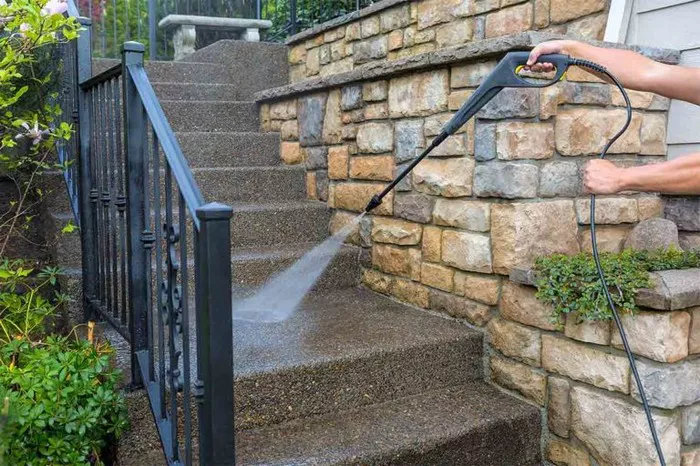A pressure washer is a powerful tool for cleaning tough surfaces like paths, decks, and walls, but it can be vulnerable to winter damage. Since pressure washers use a significant amount of water and fuel, freezing temperatures can cause the liquid to expand and crack essential components, leading to irreparable damage. To ensure your pressure washer is ready for use when spring arrives, it’s important to properly winterize it.
We spoke with pressure washer experts who shared their top tips for protecting your equipment during the colder months.
1. Shut Off the Fuel Valve
The first step in winterizing your pressure washer is to shut off the fuel valve. Pressure washer expert Daniel Check advises checking your owner’s manual to locate the fuel shut-off valve. If your machine has one, follow the instructions to properly close it.
Scott Paul, another industry expert, explains that the fuel valve is typically a small knob found near the engine. To shut it off, simply turn it clockwise. Afterward, it’s important to run the engine until it stops, which clears out any remaining fuel in the carburetor, preventing it from freezing.
2. Remove the Remaining Fuel
Once the fuel is shut off, the next step is to remove any leftover gas. Some pressure washers have an auxiliary tank that can be easily drained using a funnel, while others may not have this feature. If that’s the case, Daniel suggests using a siphon to safely remove the gas or letting the engine run until the fuel runs out.
For pressure washers without a shut-off valve, a fuel stabilizer is recommended. Fuel stabilizers prevent the fuel from spoiling and gumming up internal components, which can affect the performance of the pressure washer. To use, mix the stabilizer with fresh gas and run the engine for a couple of minutes to ensure it circulates through the system.
3. Oil Considerations
Some experts suggest changing the oil before storing the pressure washer for winter. However, Daniel Check advises waiting until spring. Since the pressure washer won’t be in use during the winter months, there’s no need to perform an oil change until you begin using it again in the spring.
4. Adding Antifreeze
In regions with extreme cold, antifreeze is necessary to protect the pressure washer’s water line and fuel pump. Scott Paul recommends adding antifreeze if the washer will be stored in freezing temperatures. He also advises storing the pressure washer in a dry area to shield it from the elements.
However, Daniel Check suggests a safer alternative to traditional antifreeze: windshield wiper fluid. Unlike antifreeze, wiper fluid is a safer chemical and can prevent freezing damage just as effectively. It’s available at most retailers, including Walmart, and can be used in place of antifreeze.
5. Winterizing Electric Pressure Washers
Electric pressure washers don’t require the same fuel-related precautions, but they still need to be winterized. To prevent water from freezing and damaging the system, run the electric pressure washer until it is dry. In especially cold climates, it may also be beneficial to use antifreeze in the system.
By following these expert-recommended steps, you can protect your pressure washer from winter damage and ensure it’s in top condition for spring cleaning. Whether you’re using a gas or electric model, proper winterization is key to extending the life of your pressure washer.
Related topics:
Upgrade Your Cleaning Routine with the Roborock Qrevo Plus – Now Only $699!
Lefant M210 Robot Vacuum Now Just $89 on Amazon
My Experience with the JOYMOOP Mop and Bucket: A Comprehensive Review

